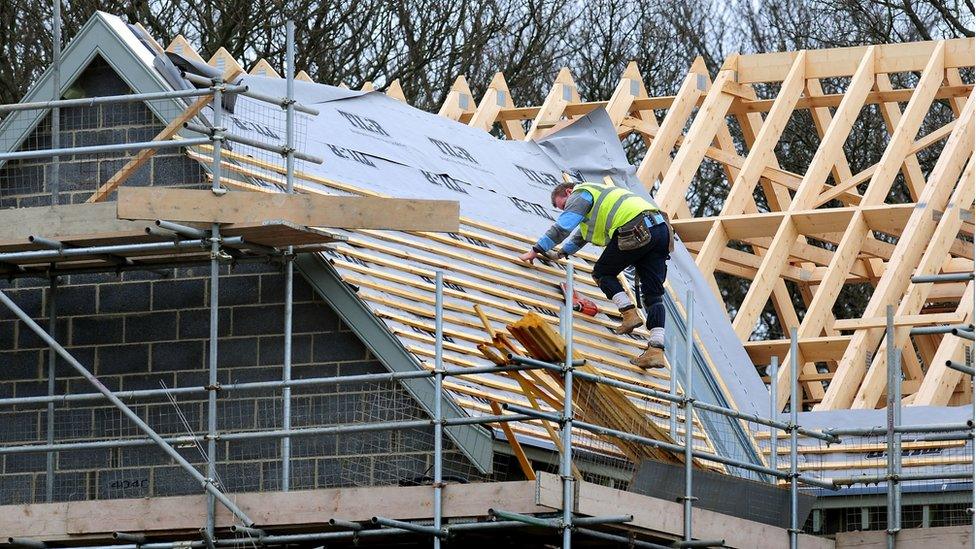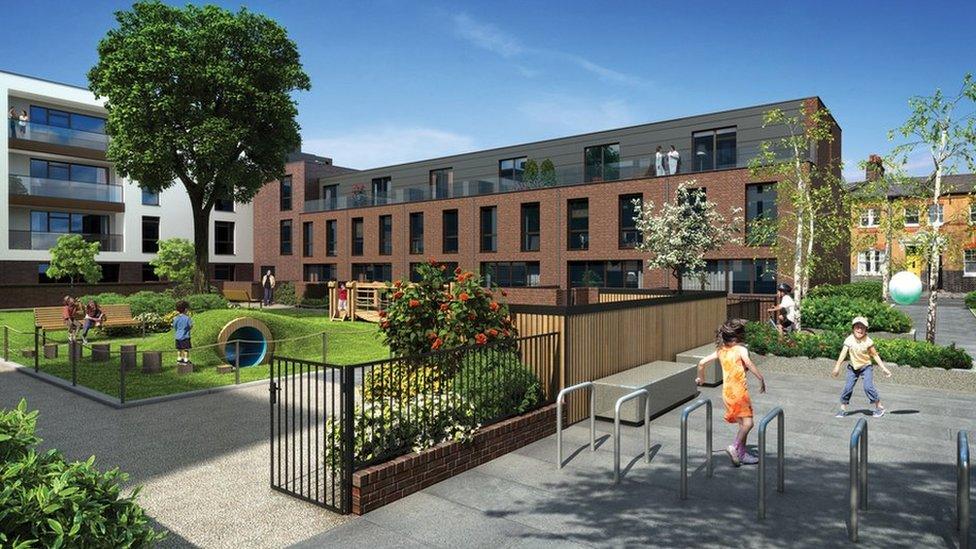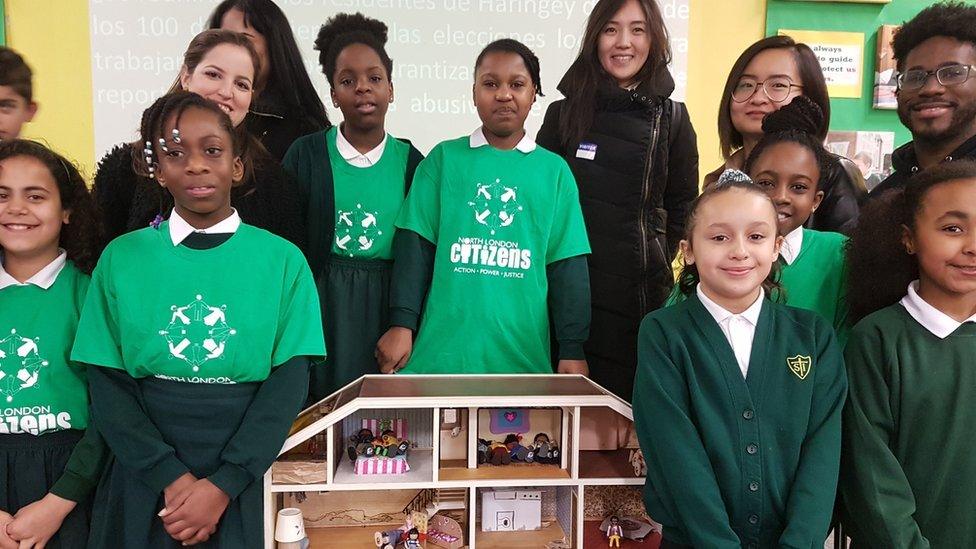The London playground separating kids from social housing
- Published
- comments
WATCH: Young resident gives her reaction to playground separation
"Why can't we go downstairs and play with our friends who are down there?" says Anna from south London.
Anna was told she wasn't allowed to use a local community playground because she lived in social housing rather than privately-owned flats.
Social housing is cheaper to rent, and gives people the chance to live in a long-term home.
The two communities are separated by a wall but Lambeth Council said it had not been part of the original plans they approved.
Henley Homes - who built the flats - now say there had never been any intention to stop children from social housing using all the play areas.
The government has also said it will investigate the matter.
What is social housing?

Social housing gives people the chance to rent a home.
It is a lot cheaper to rent social housing than renting normally and it is given to people who need it the most.
Local councils are often in charge of social housing. They decide who gets it and they make sure the properties are in good condition.
It is supposed to give people the chance to live in a long-term home.
Housing charity Shelter estimates that there are over 1.3 million people in England who are in need of social housing.
What's going on at the London playground?

This is the playground between the two flat developments
The development in Lambeth, south London, has two buildings side by side. One has people with social housing in it, and the other houses people who privately own or rent their flats.
There is a playground in between the two buildings. However, a wall and hedge separates the social and privately owned flats.
Only people living in the privately owned flat development are allowed to use the playground.

Resident Louise Whitley said she bought a flat in the development because it had been marketed as family-friendly
Lambeth Council - who gave permission to the developers to build the site - said it doesn't approve of the separation and that the wall and hedge were not in the original plans for the development.
Instead, it said the buildings, including the playground, were supposed to be an access all areas zone.
Property developers Henley Homes originally said that the buildings had since been split into two parts: Wren Mews, which is made up of social housing properties, and the Baylis Old School estate, which is full of private owners.
But now, Henley Homes boss Tariq Usmani said there had never been any intention to stop children from social housing using all the play areas.
What has been the reaction?

Some local parents told the BBC that they feel "let down and disappointed" by both the council and the developer.
Others said it looks as though it's an intentional separation of the "poor and rich".
Louise Whitley, a private owner whose children are friends with youngsters who can't use the play area, said the separation "made her cry".
She told The Guardian newspaper: "Our children's friends look down from their windows and can't come and join us. We want them to be given back the access that was shown in the original plans."
The government minister in charge of housing, James Brokenshire, tweeted: "Kids being excluded from enjoying a play area on the same development because they live in social housing is outrageous."
- Published6 March 2018

- Published29 August 2018

- Published16 January 2019

